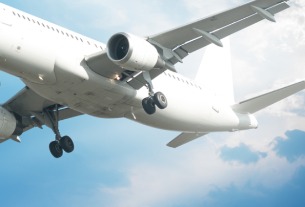Investors from Sydney to Mumbai cheered the plunge in crude-oil prices, sending Asian airline shares to their highest level in three years. The bad news is several carriers could end up losing money from the sudden drop.
Some Asian carriers, like Singapore Airlines Ltd. (SIA), have hedged fuel at an average of $116 a barrel of jet fuel, when spot market rates are about $85. That can result in losses on paper as airlines will have to account for their hedges or pay charges to unwind contracts prematurely.
Oil’s dramatic decline in the past month is a replay of events in 2008 and 2009, when Hong Kong-based Cathay Pacific Airways Ltd. (293), Chinese carriers and Singapore Air all reported millions in losses because of bets on fuel. An inability to take advantage of a drop in their biggest expense also means airlines may be reluctant to cut fuel surcharges and lower ticket prices for consumers.
“It’s like going to the casino,” Mark Clarkson, a Singapore-based business development director at OAG Aviation, a flight data firm, said about hedging. Potential losses sometimes could be much bigger than at a casino, he said. “There are a lot of zeros at the end.”
Brent and West Texas Intermediate crude fell 18 percent in November, the biggest monthly decline since November and December 2008, after the Organization of Petroleum Exporting Countries maintained its output, opting to force U.S. shale gas producers to cut supply. Oil prices are hovering around the lowest in five years.
Brent crude slipped 0.4 percent by 7:07 a.m. in London, a fourth straight decline.
Jet Fuel
Jet-fuel swaps in Singapore, Asia’s biggest oil-trading hub, slumped 13 percent last month, according to data from PVM Oil Associated Ltd., a London-based broker. The price fell 4.6 percent to $83.50 a barrel on Dec. 1, the lowest since August 2010. Jet fuel is the biggest expense for most Asian airlines, accounting in some cases for as much as 50 percent of total costs.
Airlines that buy more fuel at spot prices, such as Qantas Airways Ltd. (QAN) and Asiana (020560) Airlines Inc., stand to gain more from the drop in oil prices. The price decline is “massive” for the AirAsia group, Chief Executive Officer Tony Fernandes said last month.
Singapore Air hedged 65.3 percent of its fuel needs in the six months to March at an average price of $116 a barrel of jet fuel, according to the airline.
“We do have hedges in place. And that’s going to mute the effect of lower fuel prices,” Stephen Barnes, Singapore Air’s chief financial officer, said at an earnings briefing Nov. 7. “On the other hand, it will protect our earnings from the full effects of a bounce if that were to happen.”
Big Gamble
Nicholas Ionides, a spokesman for Singapore Air, said he wouldn’t comment beyond the CFO’s statement.
“Hedging can be a big gamble for airlines,” said Shin Ji Yoon, an analyst at KTB Securities Co. in Seoul. “While its purpose is to help minimize risks, sometimes it ends up being bad luck for some.”
Six years ago, when crude prices plunged more than 50 percent, it pushed Cathay Pacific into its first annual loss in more than a decade.
“Not too long ago, Asia was the bright spot in global aviation, and now it is one of the weaker regions,” said Will Horton, a Hong Kong-based analyst at the CAPA Centre for Aviation. “Many airlines had high aspirations, nearly contingent on the stars aligning. Fuel was a part of that equation.”
Qantas, Asiana
Cathay, in an e-mailed response to a query, declined to comment on its hedging for this year. Hong Kong’s largest carrier said it has been its policy to reduce fuel-price risk by hedging a percentage of expected consumption.
Cathay’s Finance Director Martin Murray said in August that the airline hedged 44 percent of projected fuel needs for 2015 at $101 a barrel of Brent crude, and 25 percent of its needs for 2016 and 2017 at $99 a barrel.
“The benefits are more skewed toward those who have low hedge coverage,” said Timothy Ross, the head of Asia-Pacific transport research at Credit Suisse Group AG in Singapore. He didn’t specifically name any carrier.
Qantas, Australia’s biggest airline, has “significant scope” to benefit, said Andrew McGinnes, a company spokesman.
Surcharge
About 70 percent of the fuel that Sydney-based Qantas will need to use in the six months ending June will be bought close to spot prices, McGinnes said by e-mail. He said the remainder will be priced between current levels and the higher prices seen prior to September.
Asiana, South Korea’s second-biggest carrier, has increasingly bought its fuel at spot prices since 2011 and has this year hedged 8.4 percent, according to Lee Hyo Min, a spokeswoman. China Eastern Airlines Corp. (670) doesn’t hedge, said James Wang, a spokesman for the Shanghai-based carrier.
Lower costs typically lead to airlines lowering their fuel surcharges, which means cheaper ticket prices. Some Chinese airlines have cut surcharges for four straight months for the domestic sector, while Australian carriers haven’t budged yet, Horton said.
“Airlines will hold onto prices for the time being,” OAG’s Clarkson said. “But as soon as a competitor starts being aggressive, then they’ve got to respond.”
Read original article




